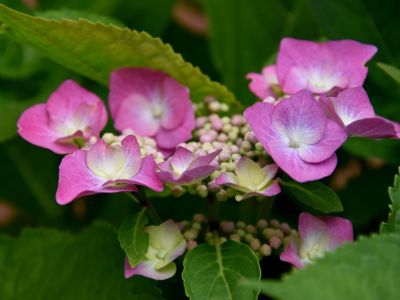What is a Mountain Hydrangea?
Native to regions of Japan and Korea, Hydrangea serrata is often referred to as mountain hydrangea. This group, which frequently includes various cultivars of lacecap hydrangeas, is prized for its ornamental beauty and unique flower clusters. Blooms range in color from blue to pinkish red, depending upon soil pH, and feature a flattened cluster of flowers.
Growing Mountain Hydrangea
When growing mountain hydrangea you’ll first need to consider the specific needs of the plant. Your planting site should receive ample sunlight, but will benefit from partial afternoon shade. Lacecap hydrangeas will also need well draining soil and sufficient space as the plant grows and reaches maturity. Due to their interest, it’s likely that mountain hydrangea plants are available at most local garden centers. Transplants are best moved into the garden in the early spring or in fall. To plant, simply dig a hole that’s approximately twice the width and depth of the hydrangea’s root ball. Gently remove the plant from the pot and place it into the planting hole. Carefully backfill the hole with soil and water the new planting well. Continue to monitor the planting until new growth resumes and the plant has become established. Mountain hydrangea care is relatively simple, but may require routine irrigation when growing in regions which are especially dry or hot throughout the summer months. Remove faded blooms as soon as the plant’s flowering has ceased. Pruning will also be necessary to promote continued blooming. Since flowers will only be produced on old wood, pruning at the proper time is crucial. Dead branches can be removed in early spring, once new growth has resumed. Exceptionally cold winter temperatures may also damage plants.
